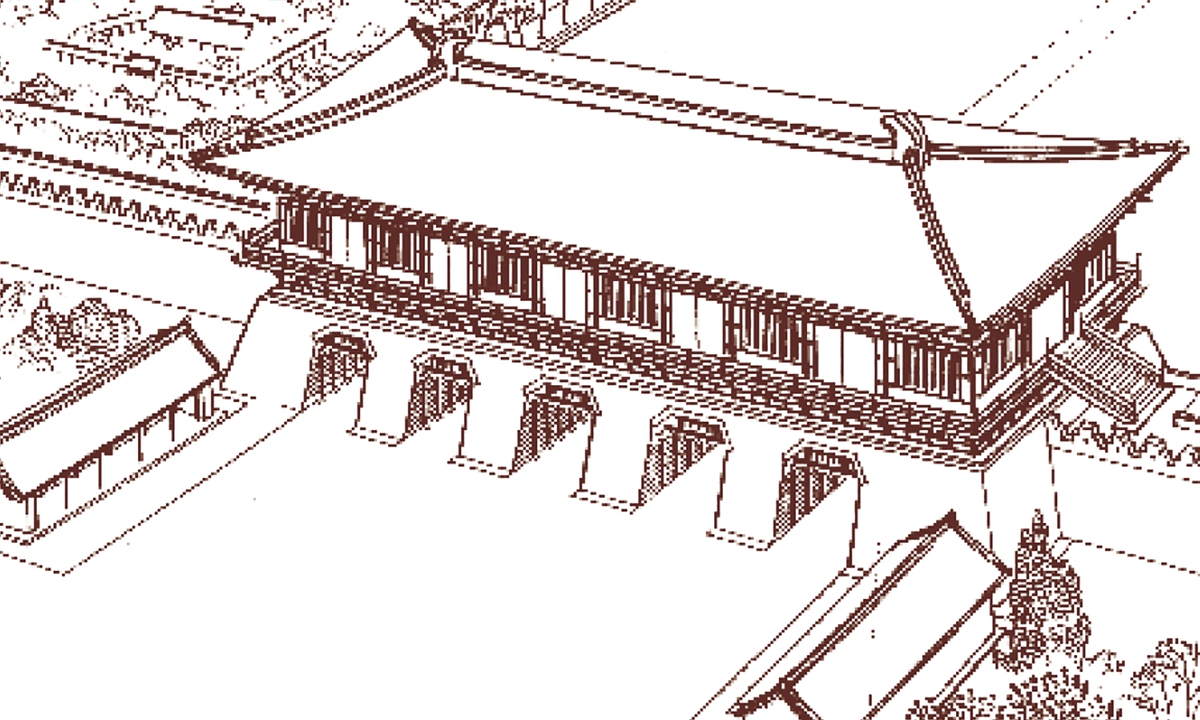Chinese Architecture
Cai Yanxin
Chang'an City of the Sui and Tang Dynasties
Chang'an City of the Sui (581-618) and Tang (618-907) dynasties (today's Xi'an) was chosen as the capital by most dynasties in Chinese history. Thirteen dynasties chose it as their capital; it is also the most ancient capital city in the world with a history of more than 1,100 years, occupying a special place in China's capital development history.
This city was the biggest one in the world at the time. Its grand scale, grid-style streets, orderly neighborhoods and strictly symmetrical axis arrangement not only became the model layout of Chinese capitals, but also influenced the constitutions of other neighboring countries' capitals such as Japan's Heijokyo and Heian-kyo.
Emperor Wendi of the Sui Dynasty began to build Daxing City (today's urban area of Xi'an) on a large scale in the 2nd year of the Kaihuang Period (582). In 618 AD, the Tang Dynasty also selected Daxing City as the capital and renamed it Chang'an. Chang'an City maintained Daxing City's basic pattern with Zhuque Street as the central axis. The roads on both sides of it, the east and west markets and the residential neighborhoods were strictly symmetrical, highlighting the importance of the imperial palace.
The roads in the city were grid-shaped with clear rank differences. There were 11 north-south streets and 14 east-west streets. The six roads leading to the city gates were main roads, called "Six Streets."
Other roads were secondary ones with orderly drainage ditches and locust trees on both sides. These roads divided the residential area in the city into 108 neighborhoods and two central markets: the east market and the west market.
Out of safety and management concerns, these residential neighborhoods and markets were all closed.
About the book
Chinese Architecture Written by Cai Yanxin Published by China Intercontinental Press

Cai Yanxin
Chang'an City of the Sui and Tang Dynasties
Chang'an City of the Sui (581-618) and Tang (618-907) dynasties (today's Xi'an) was chosen as the capital by most dynasties in Chinese history. Thirteen dynasties chose it as their capital; it is also the most ancient capital city in the world with a history of more than 1,100 years, occupying a special place in China's capital development history.
This city was the biggest one in the world at the time. Its grand scale, grid-style streets, orderly neighborhoods and strictly symmetrical axis arrangement not only became the model layout of Chinese capitals, but also influenced the constitutions of other neighboring countries' capitals such as Japan's Heijokyo and Heian-kyo.
Emperor Wendi of the Sui Dynasty began to build Daxing City (today's urban area of Xi'an) on a large scale in the 2nd year of the Kaihuang Period (582). In 618 AD, the Tang Dynasty also selected Daxing City as the capital and renamed it Chang'an. Chang'an City maintained Daxing City's basic pattern with Zhuque Street as the central axis. The roads on both sides of it, the east and west markets and the residential neighborhoods were strictly symmetrical, highlighting the importance of the imperial palace.
The roads in the city were grid-shaped with clear rank differences. There were 11 north-south streets and 14 east-west streets. The six roads leading to the city gates were main roads, called "Six Streets."
Other roads were secondary ones with orderly drainage ditches and locust trees on both sides. These roads divided the residential area in the city into 108 neighborhoods and two central markets: the east market and the west market.
Out of safety and management concerns, these residential neighborhoods and markets were all closed.
About the book
Chinese Architecture Written by Cai Yanxin Published by China Intercontinental Press

The Mingde Gate of Chang'an in the Tang Dynasty, restored by Fu Xinian Photo: Courtesy of the China Intercontinental Press

